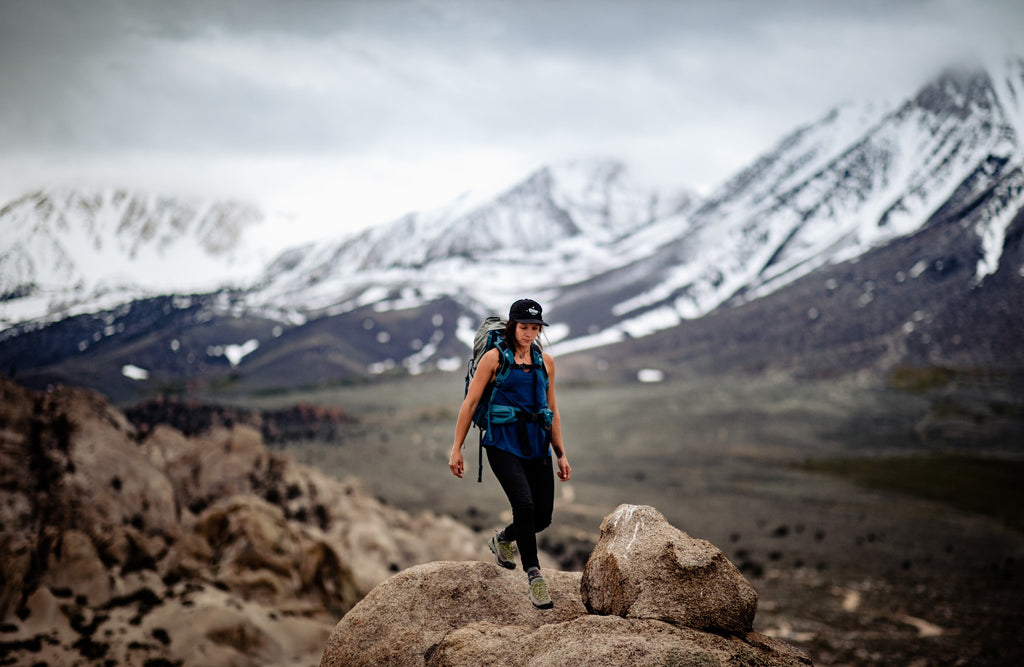The joy of backpacking is the simplicity of it -- everything you need is on your back. The downside? Everything you need is on your back. Packing well and packing light will not only keep you more comfortable, it can actually prevent injury too. The recommended weight for your pack is not to exceed 20 percent of your body weight.
"A light, well-organized pack can make your journey easier and more enjoyable."
Some people suggest going extreme when trying to lighten your load: cutting excess straps, paying more for the absolute lightest stove or sleeping bag, or leaving the tent at home. But we prefer a simpler approach.
Andrew Skurka, an adventure athlete and guide who has hiked more than 30,000 miles, also warns against going too light, “I went ‘stupid light’ by not taking gear and supplies that were necessary given the conditions, and taking gear and supplies that were too light.”
For a good balance, here are our backpacking packing tips for light yet effectively packing for your next summer trip.
Do your homework.
Depending on where you’re going, what season you’re going in, and what the trail is like, you might need things like trekking poles or extra warm clothes. Find out as much about the trail as you can. If it’s going to be super exposed and you’ll be hiking midday, don’t forget sunscreen and light clothes that offer ample UPF sun protection, like the Ridge Merino Solstice Hoodie. If the forecast is clear for your trip, consider shedding weight by leaving your tent rain fly at home. If the trail is rocky, be sure the shoes you wear have some grip to them.

Go with a friend and share the load.
Not only is it more fun to be in the backcountry with a friend, you’ll get the added benefit of sharing the weight. You’ll only need one stove and probably just one tent, plus you could share other things like water filtration systems and bug spray. In many backpacking areas, you’ll need to properly store food from bears with a bear canister. Bear canisters are bulky, so being able to share this with a friend can keep weight down too. Remember that you’ll have to pack out everything you pack in, so toss in a bag for your trash as well
Take advantage of multi-purpose tools and clothes.
Bringing a Swiss Army Knife or a Leatherman is an easy way to keep your pack simple while still having all the tools you could need. The same principle applies to clothes: pack clothing and accessories you can use for multiple things. A Buff can protect you from sun and bugs or be used over hair like a bandana. A puffy jacket can warm you up on cold mornings and be used as a pillow at night. Good Merino wool base layers can be worn for hiking, then transition seamlessly into cozy pajamas and be worn again the next day.

Say no to cotton and yes to Merino wool.
Backpacking is a sweaty sport, especially on a hot summer day. Then when you slow down to set up camp, sweaty clothes can chill you, which is hard to come back from. Cotton absorbs moisture, and when it does, it loses its ability to keep you warm. As mentioned above, Merino wool (especially against your skin) is a godsend for backpackers. Merino wool backpacking layers can regulate your temperature, wick moisture away, and will keep you warm even if they get wet. As a bonus, Merino wool is also odor-resistant, so the “no-showers” aspect of backpacking won’t be an issue.

Get organized to pack smart.
REI breaks a backpacking pack into three zones:
1) a bottom zone perfect for carrying bulky gear that you won’t need until you set up camp,
2) a core zone for heavier items,
3) and a top zone for bulky things you might need when you’re out hiking.
Most backpacking packs have a “brain” at the top of the back -- a perfect area for storing trail essentials like snacks, extra layers and water filters -- so you don’t have to open your pack while you’re on the trail.
Drink up and filter often.
Invest in a good quality water filter that works quickly so you can filter water as you come across it instead o carrying multiple water bottles. At every water source, filter water, drink as much as you can, then fill up a bottle or two depending on when your next stream crossing is. One liter of water weighs 2.2 pounds, so you’ll definitely lighten your load if you can plan around filtering at stream crossings during your hike.
Dry everything out.
Even if you’re wearing good Merino wool base layers, you’ll still want to make sure all of your clothes dry out if they get sweaty. Merino wool dries quickly when hung on a line, especially if you can find a sunny spot. Don’t forget to dry out your tent in the sun before you pack it up if it falls victim to morning dew -- carrying that extra water doesn’t help the weight issue.
The magic of backpacking comes from being out in the wilderness, whether you’re going five or 50 miles into the backcountry. A light, well-organized pack can make your journey easier and more enjoyable - allowing you to go farther and stay out longer.





